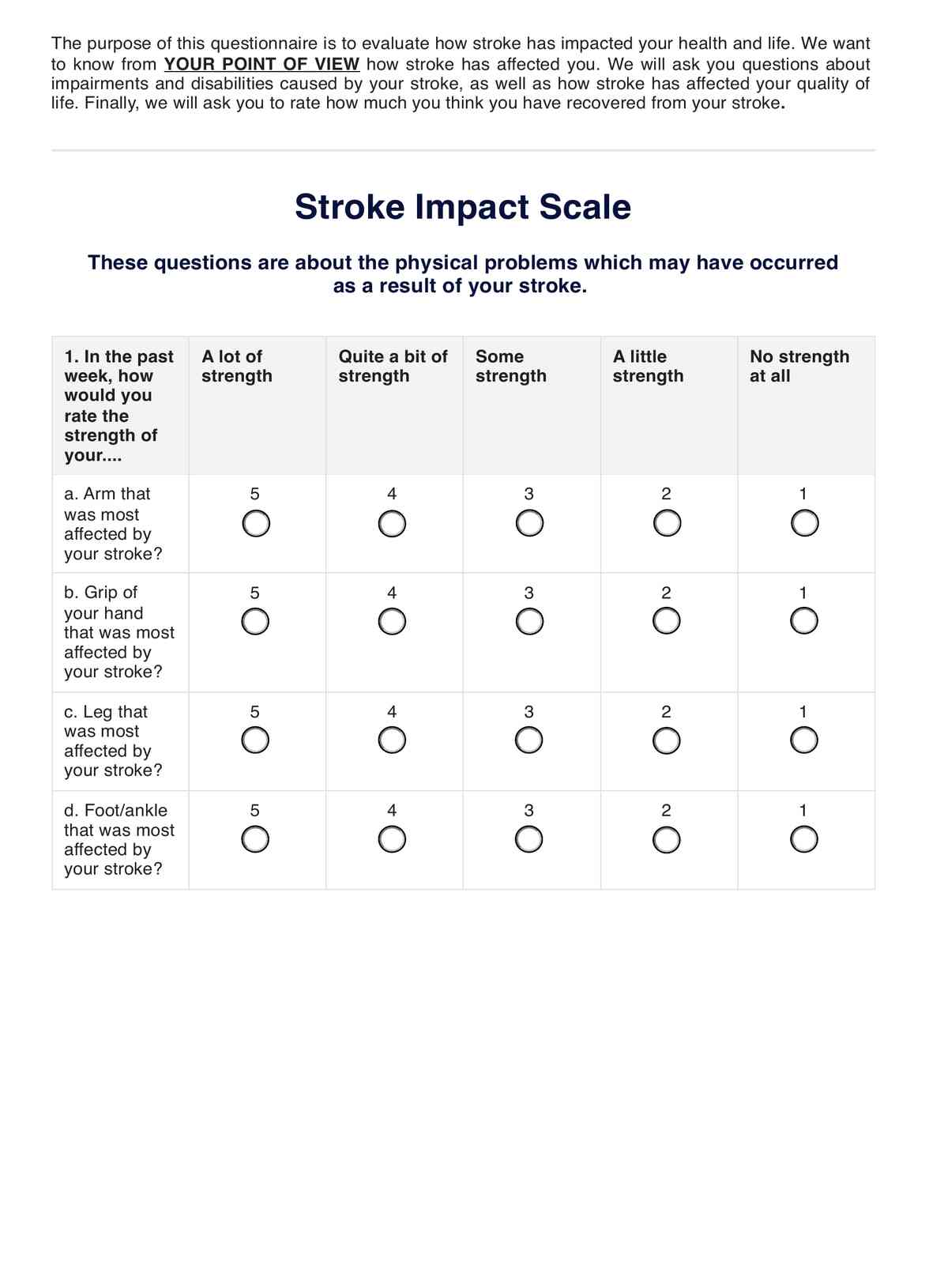A team of researchers developed the scale. It’s available for licensing by the University of Kansas Medical Center.

Assess stroke impact accurately and efficiently with our free Stroke Impact Scale Template. Prioritize patient health, and alleviate symptoms before they escalate.
A team of researchers developed the scale. It’s available for licensing by the University of Kansas Medical Center.
There’s the original version and version 2.0. Please use 3.0, SIS-16, or the SF-SIS.
It takes 15-20 minutes to accomplish this scale.
EHR and practice management software
*No credit card required
Free
$0/usd
Unlimited clients
Telehealth
1GB of storage
Client portal text
Automated billing and online payments